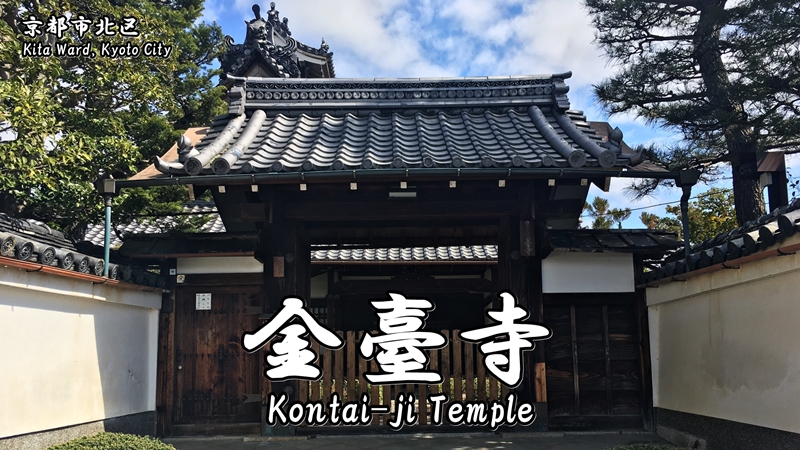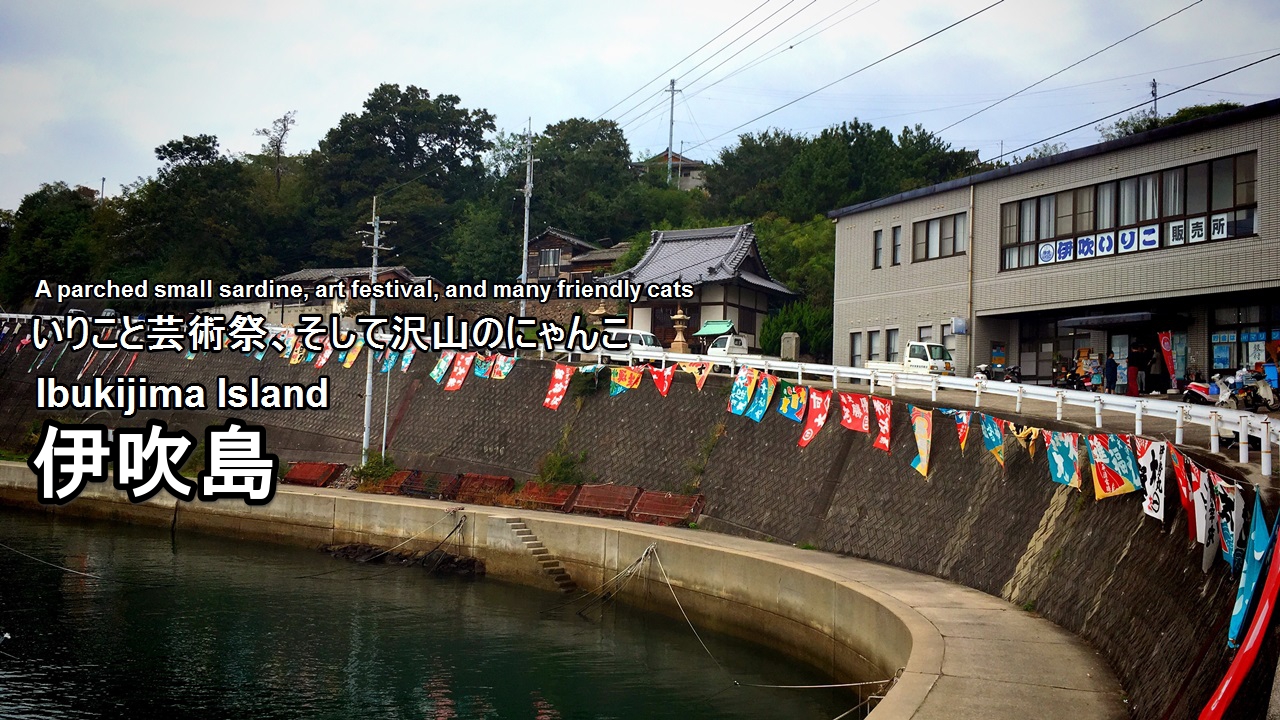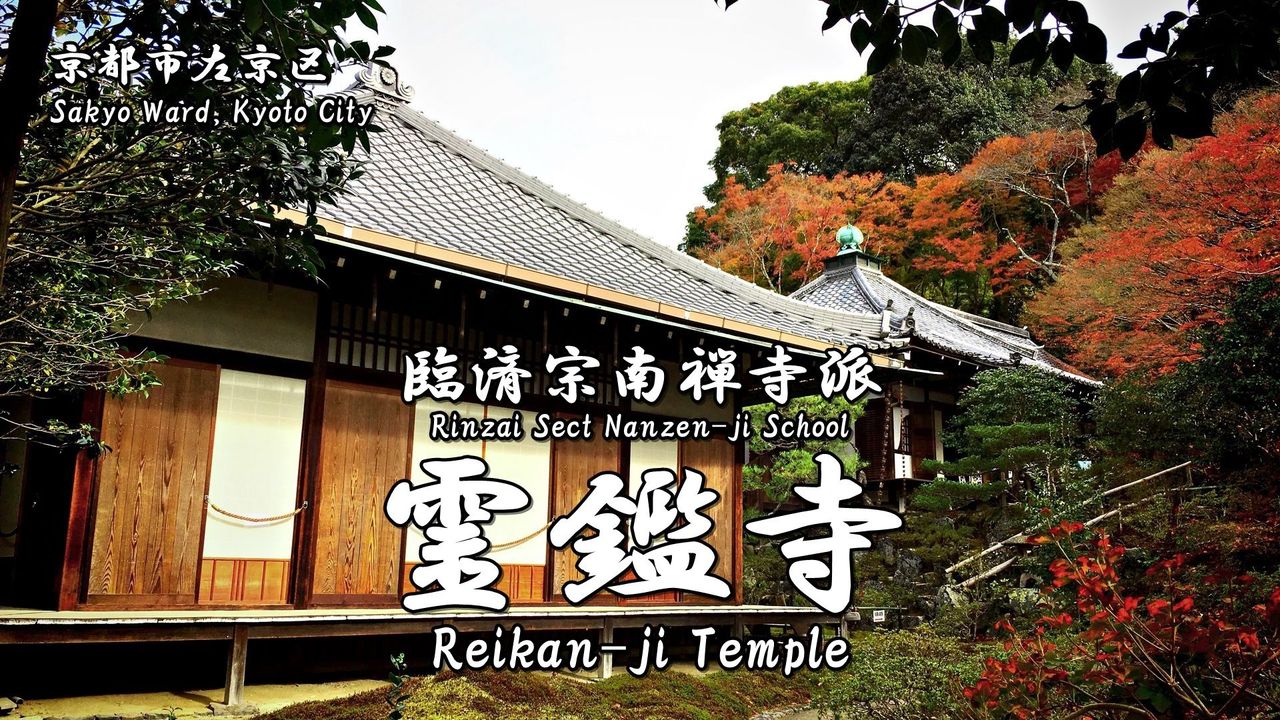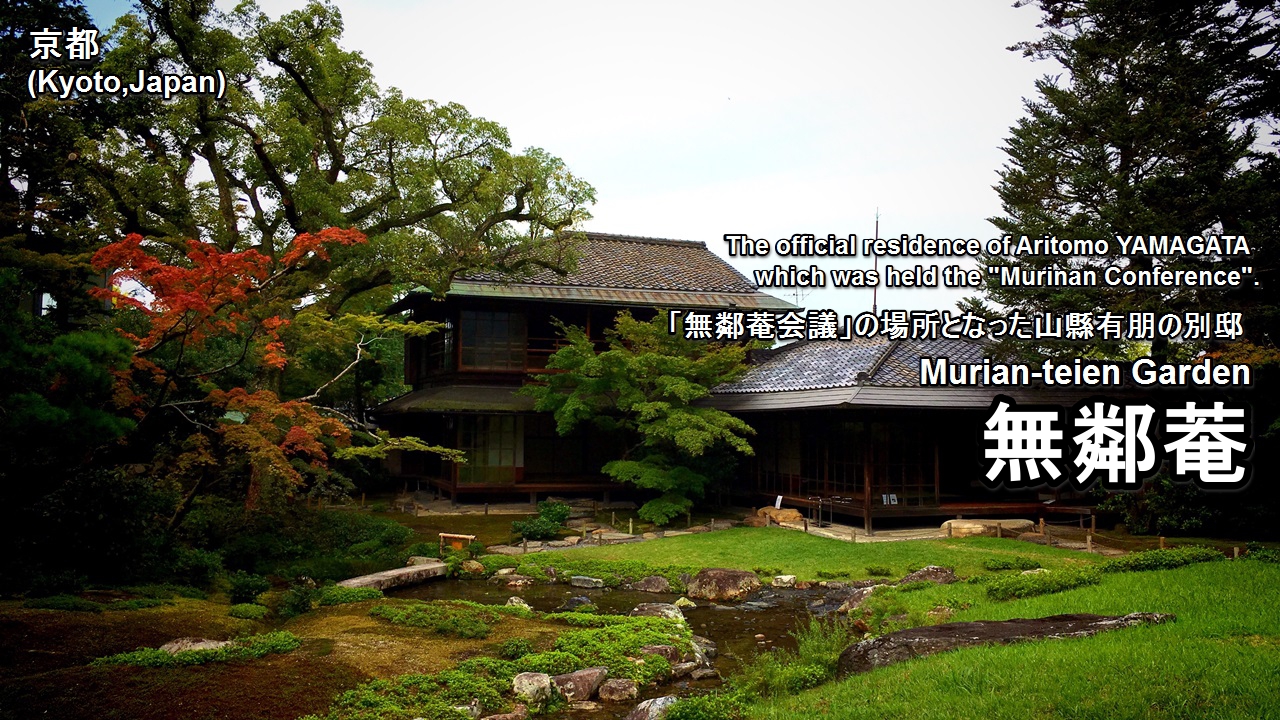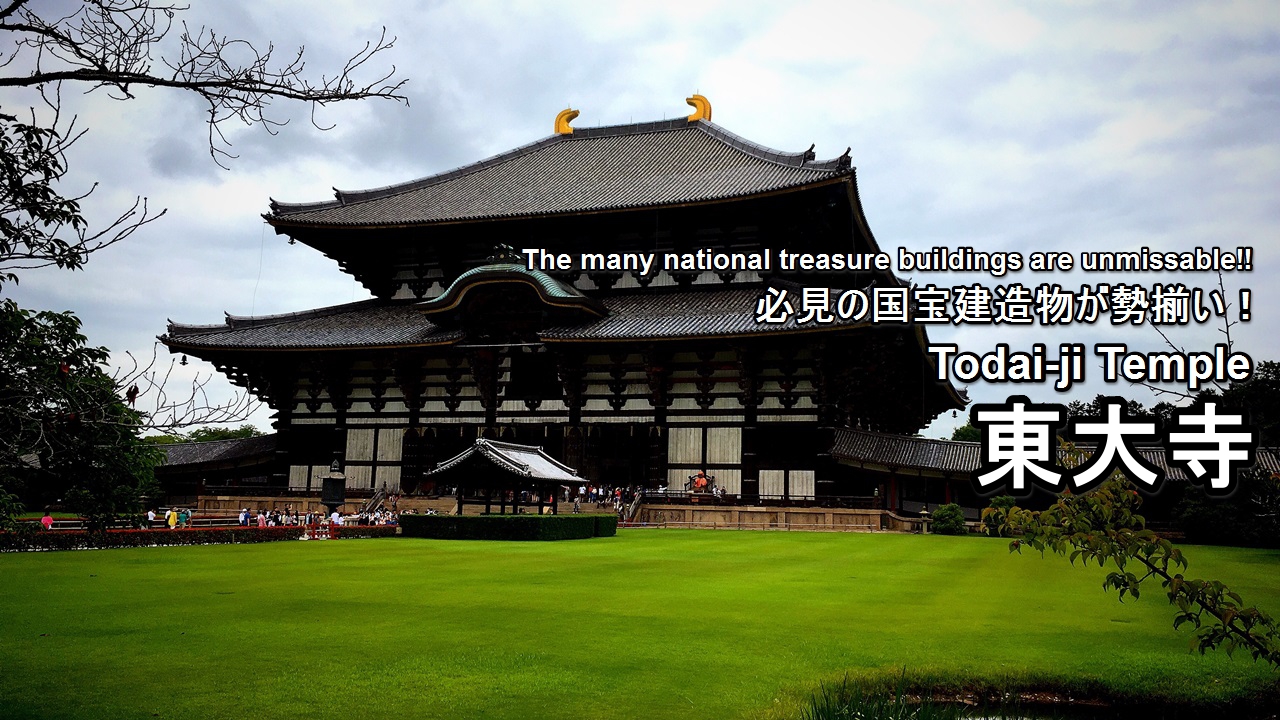Shokoku-ji temple in Kamigyo Ward, Kyoto City is the head temple of the Rinzai sect Shokoku-ji School of Zen Buddhism.
The temples of the Rinzai sect have two formality which are called ‘Kyoto Gozan’ and ‘Kamakura Gozan’.
Shokoku-ji Temple is the second of the Kyoto Gozan (Five Great Zen Temples of Kyoto) and was founded by Yoshimitsu ASHIKAGA who was the third Shogun of the Muromachi bakufu.
This temple is not so famous, but Kyoto’s famous sites Kinkaku-ji Temple (Rokuon-ji Temple) and Ginkaku-ji Temple (Jisho-ji Temple) are sub-temples of this Temple.
In addition, the name of this temple which is called “相国(Shokoku)” has a meaning of “to govern a country”.
It is exactly that this temple is one of the Japan’s leading temple in both name and reality.
If you will go to Kinkaku-ji Temple (Rokuon-ji Temple) and Ginkaku-ji Temple (Jisho-ji Temple), please try to go this temple, too.
So, I went to the Shokoku-ji Temple this time.
Contents:
- About Shokoku-ji temple
- Visitor Information
- About Kyoto Gozan (Five Great Zen Temples of Kyoto)
- The highlights of Shokoku-ji temple
- Goshuin (the stamp of shrine or temple) of Shokoku-ji temple
- How to get to Shokoku-ji temple
1.About Shokoku-ji temple
Shōkoku-ji (相国寺), formally identified as Mannen-zan Shōkoku Shōten Zenji (萬年山相國承天禅寺), is a Buddhist temple in northern Kyoto, founded in 1382 by Ashikaga Yoshimitsu.
引用(citation):https://en.wikipedia.org/wiki/Sh%C5%8Dkoku-ji
Open:10:00~16:00
Admission Fee:800 yen(Adult), 700 yen(Junior high school / high school student), 400 yen(Elementary school student)
Address:Sokokujimonzencho, Kamigyo-ku Kyoto-shi, Kyoto, 602-0898, Japan
Phone Number:+81-75-231-0301
Foundation:1382
Founder:Yoshimitsu ASHIKAGA
Sect:Rinzai sect Shokoku-ji School
Principal image:Shaka Nyorai (Shakyamuni)
Shokoku-ji temple in Kamigyo Ward, Kyoto City is the head temple of the Rinzai sect Shokoku-ji School of Zen Buddhism.
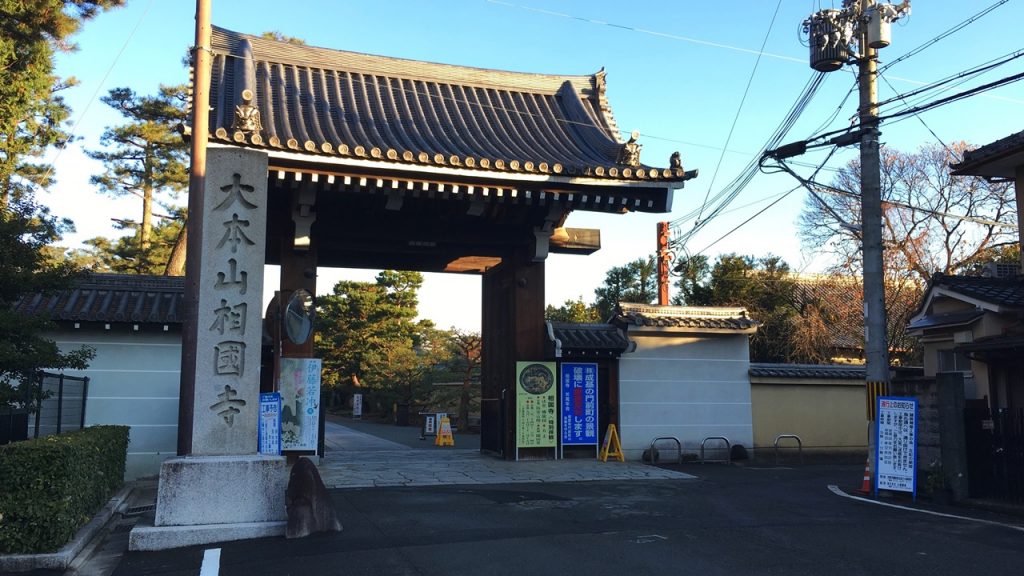
This Temple is the second of the Kyoto Gozan (Five Great Zen Temples of Kyoto) and was founded by Yoshimitsu ASHIKAGA who was the third Shogun of the Muromachi bakufu.
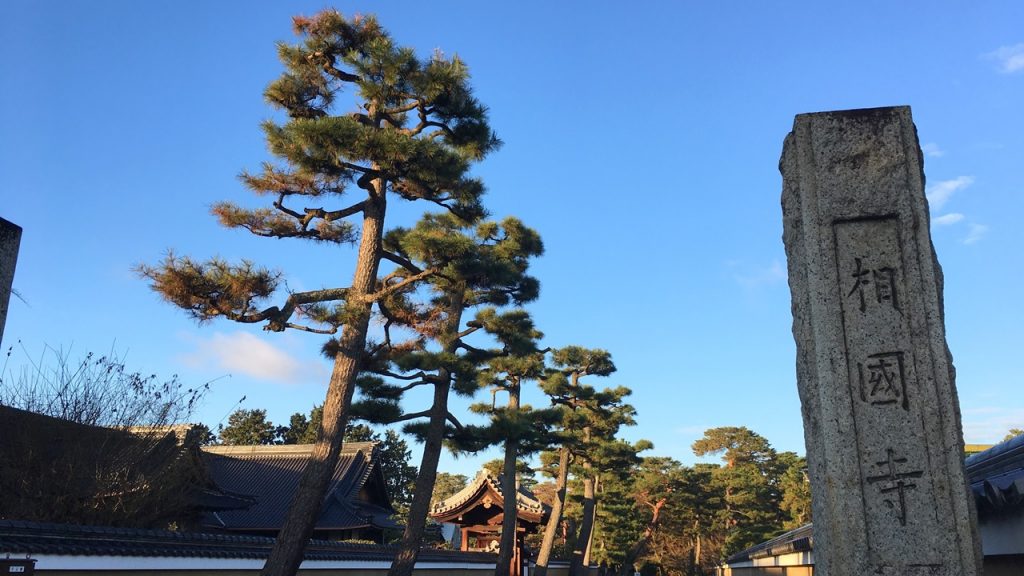
In addition, This temple’s Kaisan (first chief priest) is Soseki Muso who was a famous Zen monk of the Rinzai Sect of Buddhism from the late Kamakura period to the Nanboku-cho period, and to the early Muromachi period, and the principal image is Shaka Nyorai (Shakyamuni).
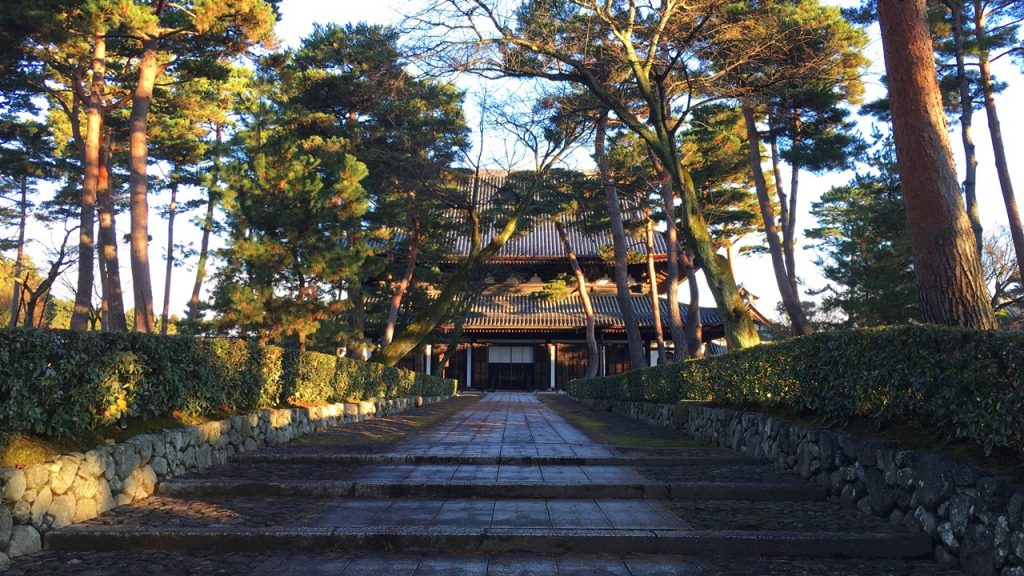
Shokoku-ji temple was at the center of Gozan Literature and was also home temple to Sesshu who was the most famous painter of suibokuga in Muromachi period.
(Gozan Literature was literature in Chinese developed in Zen temples from the late Kamakura period to the Muromachi period.)
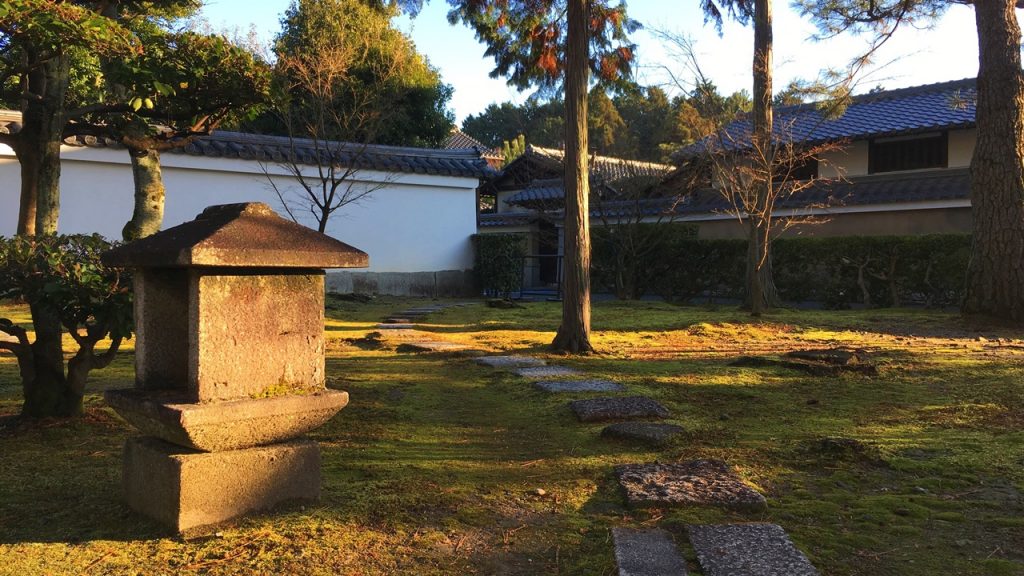
Partly because the Ashikaga clan gave sanctuary to the Zen sect, Zen culture and Gozan-bungaku (a Chinese literature of Zen temples) were in their prime and Shokoku-ji Temple, the temple of Ashikaga Family, produced many artist-monks such as Josetsu, Shubun and Sesshu.
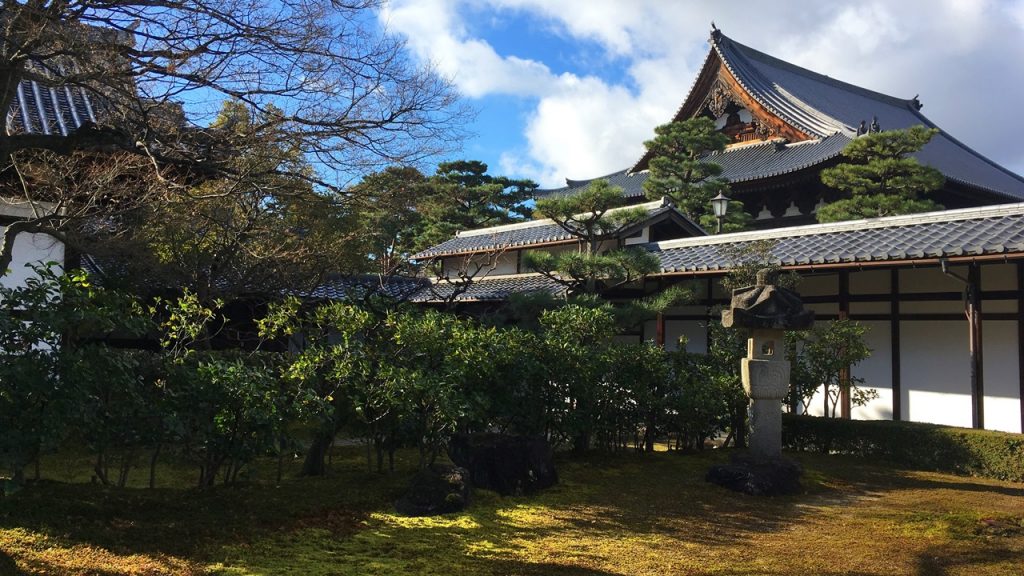
Because this temple is head temple of the Rinzai sect Shokoku-ji School, it is one of the most important temple in Japan’s Zen temples.

2.Visitor Information
・Hatto hall and Hojo(Hojo garden) are only open to the public on specific days in spring and autumn.
Special admission period: “March 24 – June 4 (Spring)” and “September 25 – December 15 (Autumn)”
*Senmyo(Yokushitsu – bathing room) is open to the public by addition in spring, and Kaisan-to hall is open to the public by addition in autumn.
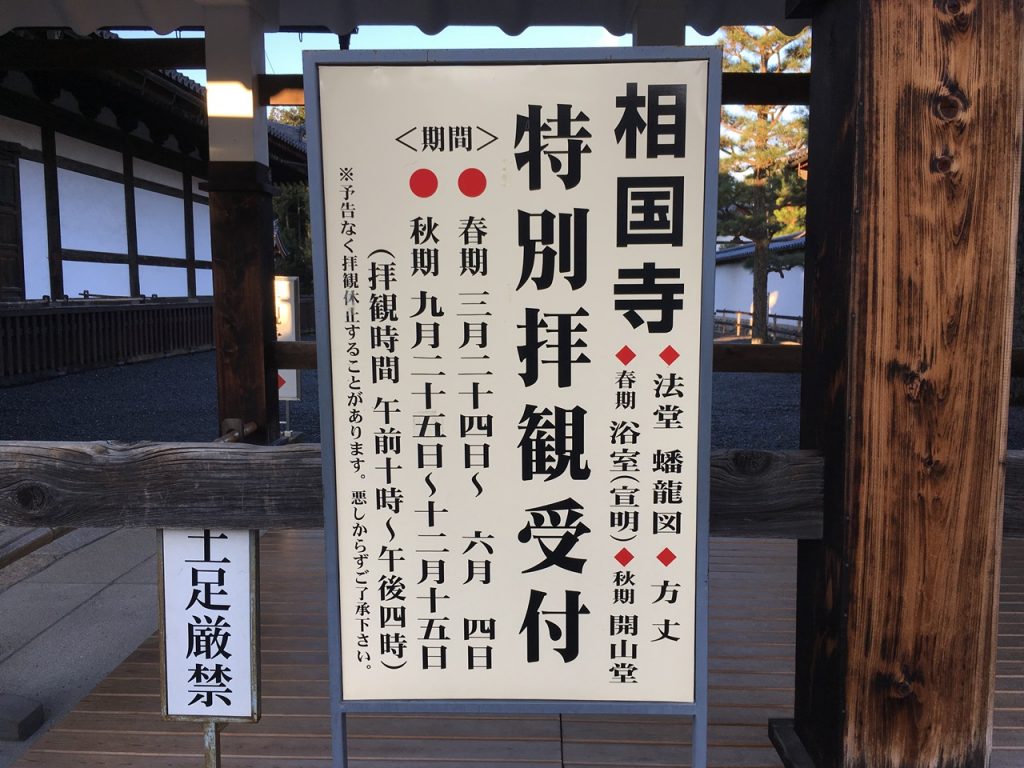
Special admission period may change every year. Please confirm the temple’s homepage.
・Photography and video recording are prohibited inside the building of this temple.
(The outside of the building and the gardens are OK.)
Let’s follow a rule.
3.About Kyoto Gozan (Five Great Zen Temples of Kyoto)
Kyoto Gozan Temples refers the status of a Buddhist temple, and to the system of state-sponsored temples of the Zen sect (Rinzai sect) in Kyoto among the Five Mountain System.
Now, the status of a Buddhist temple of Kyoto Gozan Temples is as follows.
別格:南禅寺(Bekkaku (exceptional) – Nanzen-ji Temple)
第一位:天龍寺(The first grade – Tenryu-ji Temple)
第二位:相国寺(The second grade – Shokoku-ji Temple)
第三位:建仁寺(The third grade – Kennin-ji Temple)
第四位:東福寺(The fourth grade – Tofuku-ji Temple)
第五位:万寿寺(The fifth grade – Manju-ji Temple)
Shokoku-ji Temple is the second of the Kyoto Gozan.
4.The highlights of Shokoku-ji temple
- 総門:So-mon gate (Main gate)
- 勅使門:Chokushi-mon gate (gate for Imperial Envoys)
- 法堂(重要文化財)*:Hatto hall (Lecture hall)(Important cultural property)*
- 方丈*:Hojo (Abbot’s Quarters)*
- 開山塔*:Kaisan-to hall*
- 宣明(浴室)*:Senmyo(Yokushitsu – bathing room)*
- 経蔵:Kyozo (sutra repository)
- 洪音楼:Koon-ro (bell tower)
- 天響楼:Tenkyo-ro (bell tower)
- 庫裏:Kuri (monks’ living quarters)
- 弁天社:Benten-sha Shrine
- 宗旦稲荷社:Soutan Inari-sha Shrine
- 承天閣美術館:Jotenkaku Museum
「*印」のついている見どころは有料エリアです。(This seal (*) is a pay area.)
●総門:So-mon gate (Main gate)
This is the So-mon gate (Main gate) built in 1797 of the Edo period which was designated as a tangible cultural property designated by Kyoto City.
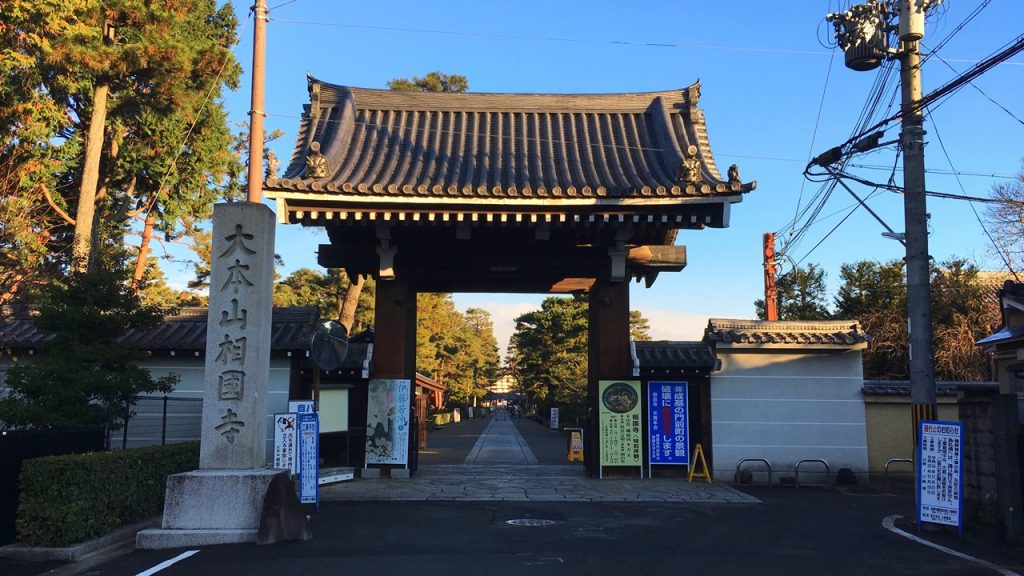
●勅使門:Chokushi-mon gate (gate for Imperial Envoys)
This is the Chokushi-mon gate (gate for Imperial Envoys) rebuilt in the Edo period which was designated as a tangible cultural property designated by Kyoto City.
This gate is built in the west side of the So-mon gate (Main gate).
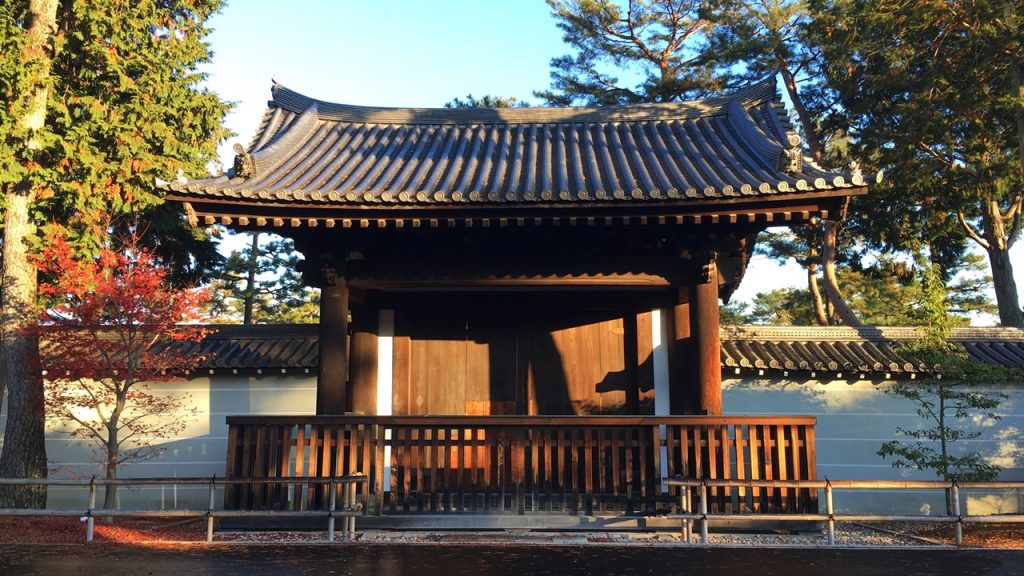
●法堂(重要文化財)*:Hatto hall (Lecture hall)(Important cultural property)*
This is the Hatto hall (Lecture hall) rebuilt in 1605 of the Edo period which was designated as an important cultural property.
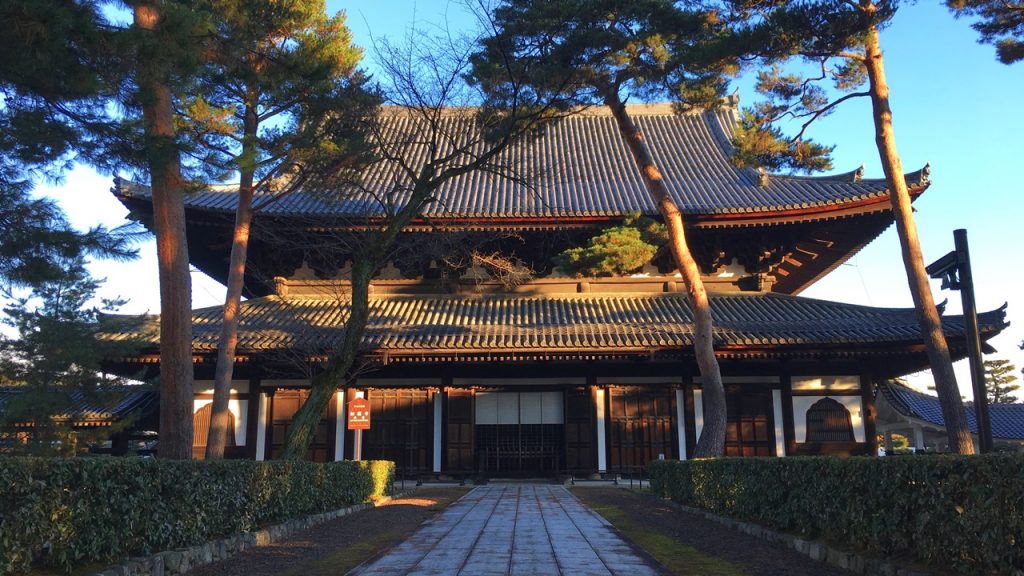
This building is also known as ‘無畏堂(Mui-do)‘ and rebuilt using funds donated by Hideyori TOYOTOMI.
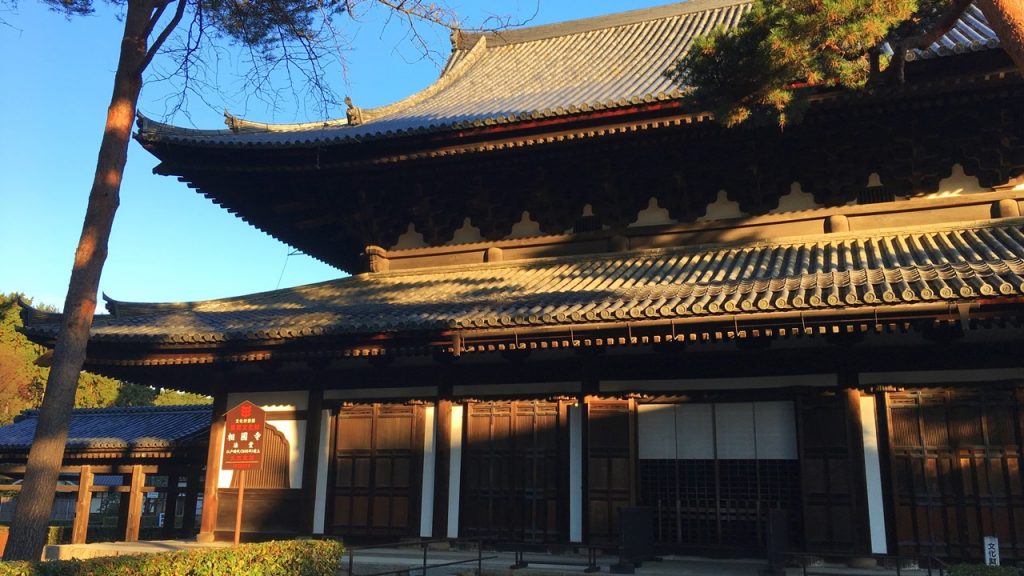
In addition, this building is also the oldest building of Hatto hall architecture in Japan.
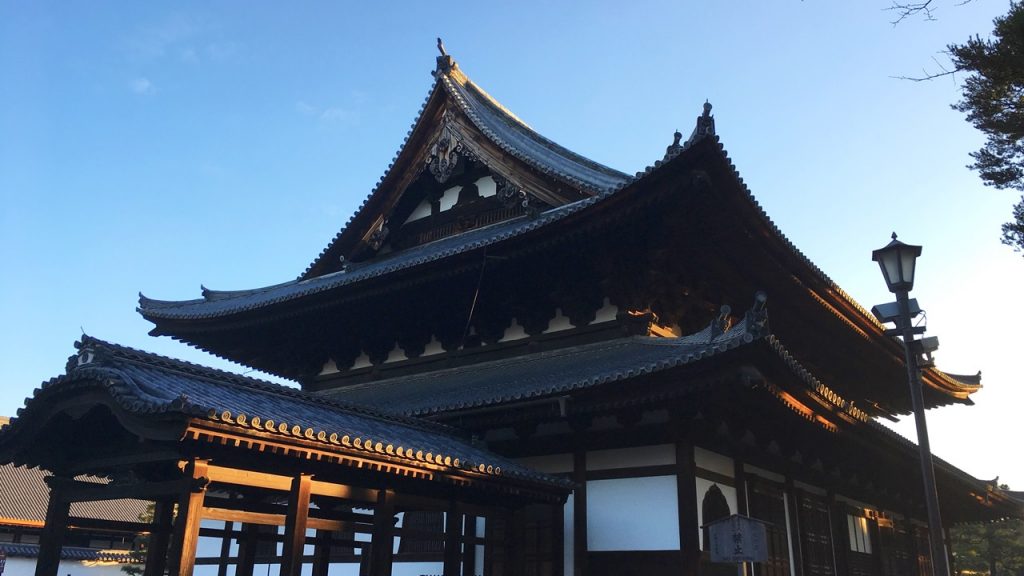
There is “Banryu-zu (roaring dragon painting)” which was drawn by Mitsunobu KANO on the ceiling of this building.
Clapping hands at specific locations causes vibrations, which have led to it being referred to as the ‘roaring dragon’.
*Photography and video recording are prohibited inside this building.
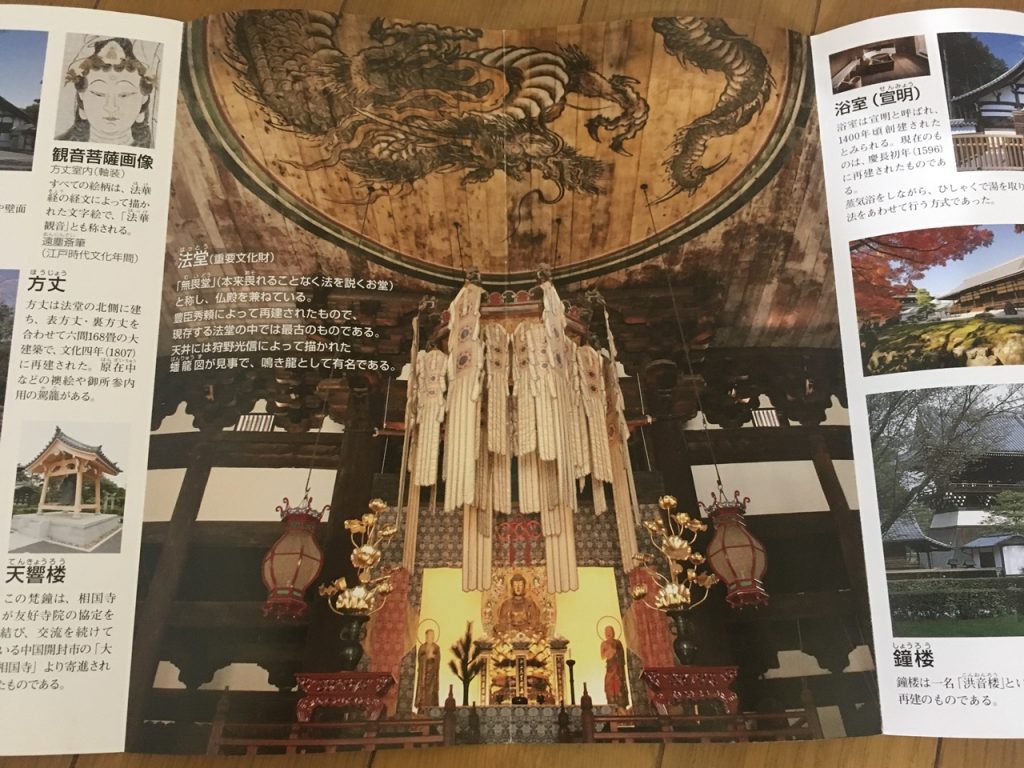
●方丈*:Hojo (Abbot’s Quarters)*
This is the Hojo (Abbot’s Quarters) built in 1807 of the Edo period which was designated as a tangible cultural property designated by Kyoto City.
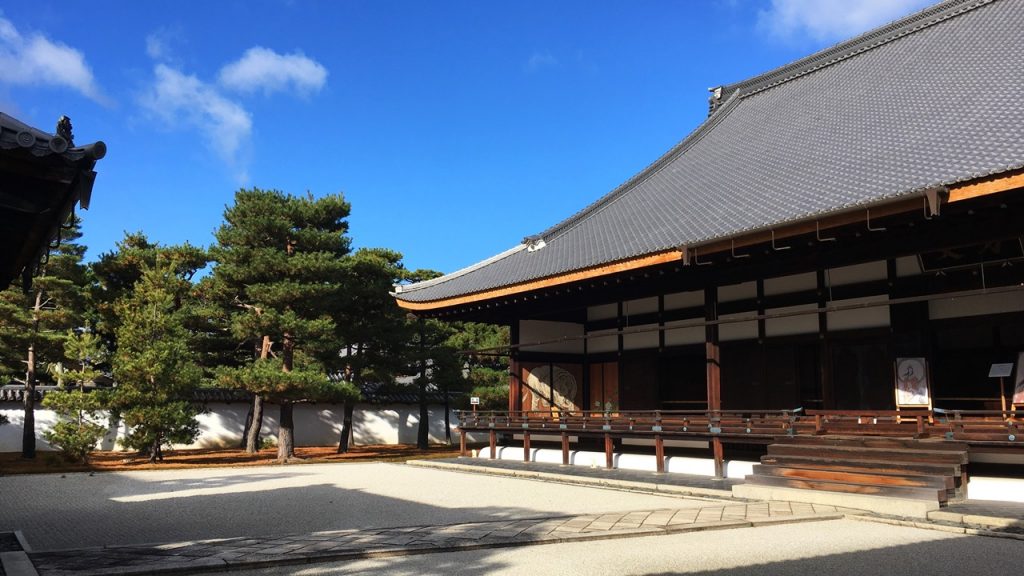
The front garden of Hojo is a Japanese rock garden.

The Chokushi-mon gate of Hojo garden is also designated as a tangible cultural property designated by Kyoto City.
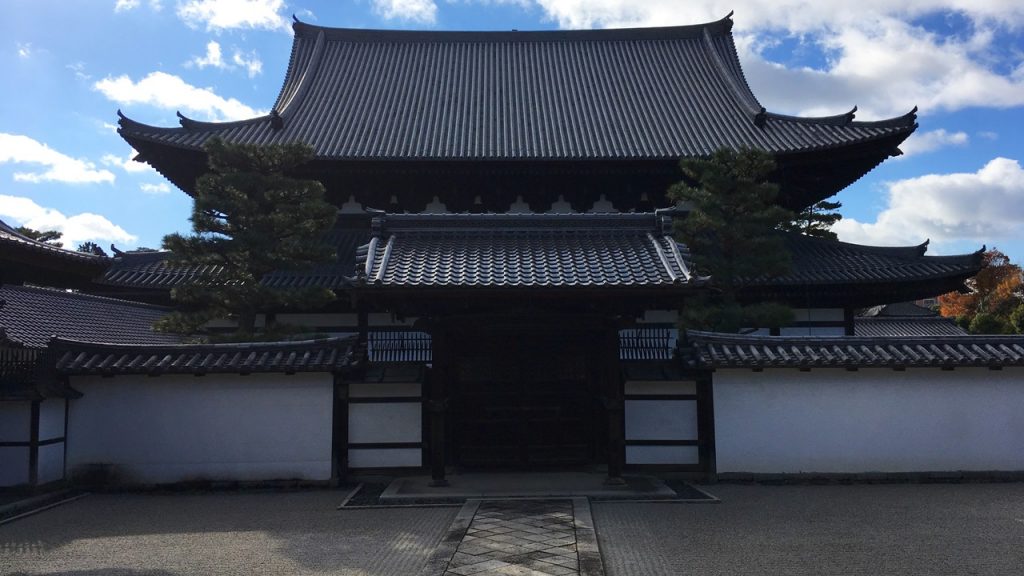
This is the picture which imaged the Kannon Bosatsu (Guanyin) enshrined in this building.
All the lines of this picture are drawn by the sutra of the Lotus Sutra.
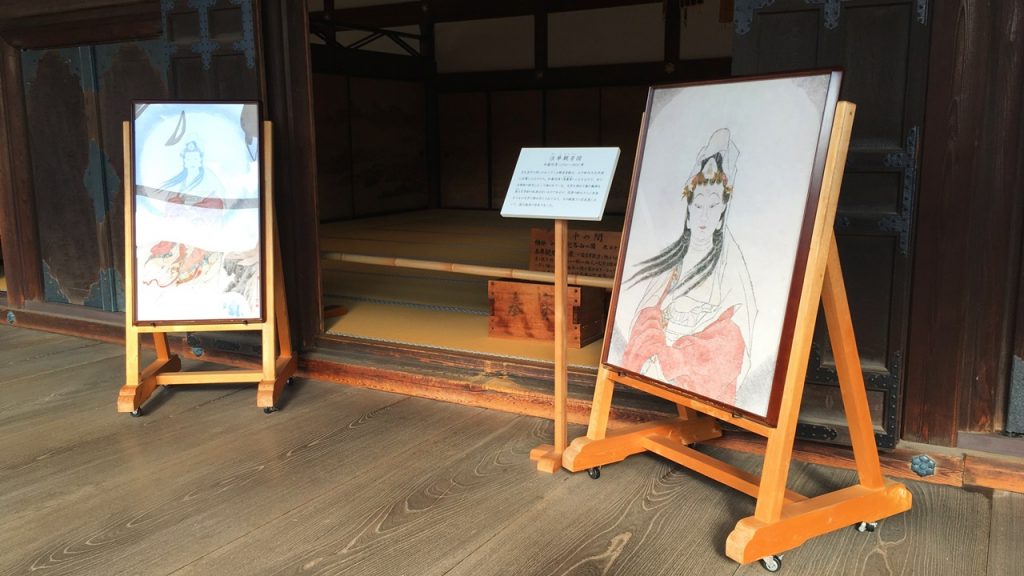
This is the cedar-door’s paintings called “白像図(white elephant image)” which was drawn by Zaichu Hara.
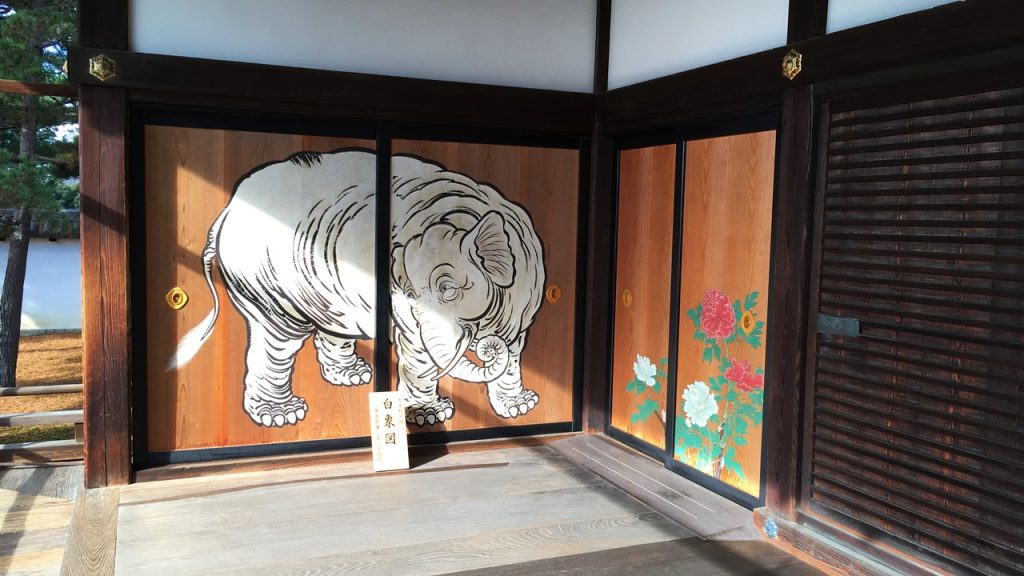
There is a garden called “Ura Hojo garden” in the back side of Hojo.
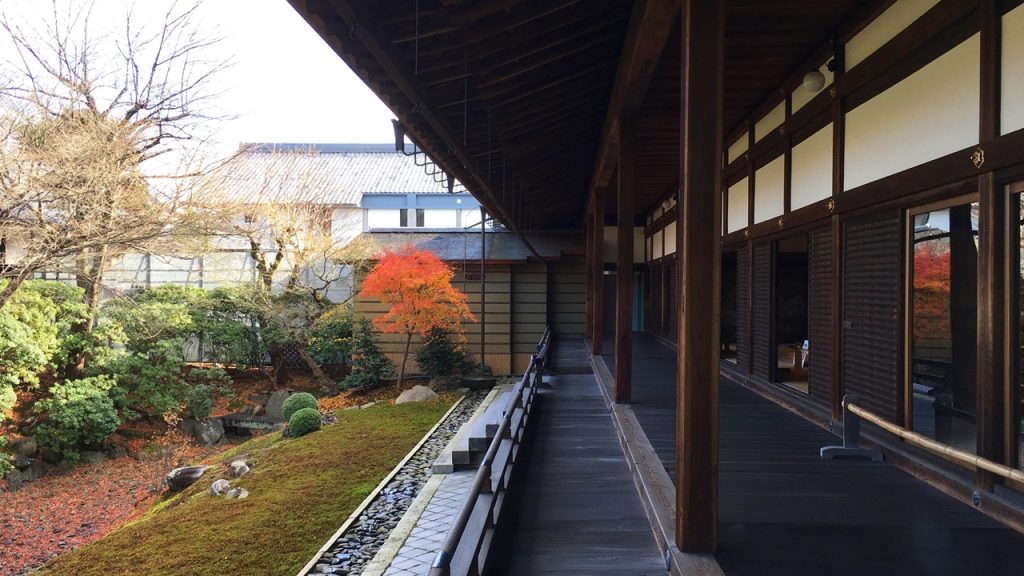
This garden is mossy garden unlike a front garden.
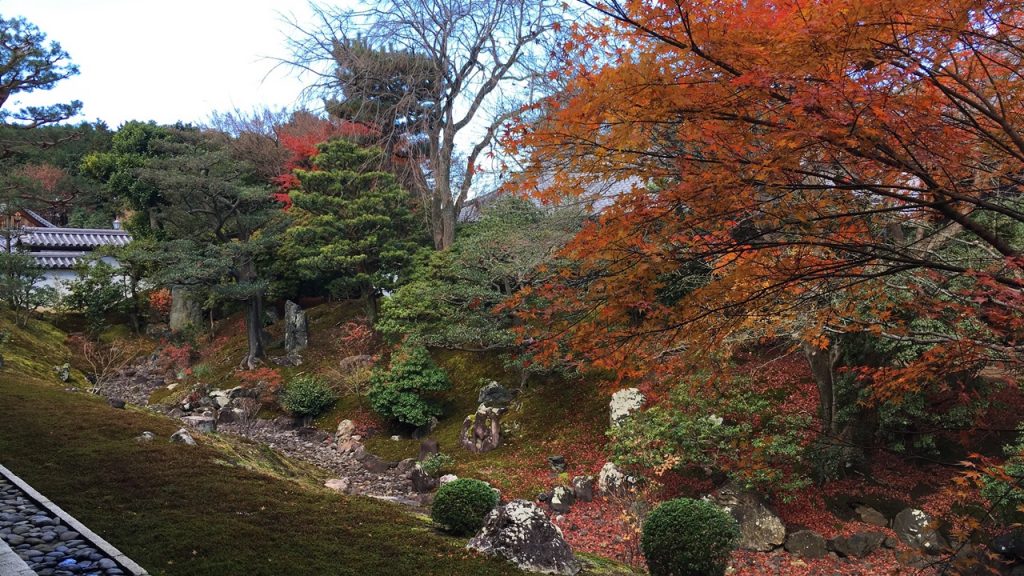
●開山塔*:Kaisan-to hall*
This is the Kaisan-to hall rebuilt in 1807 of the Edo period.
We can enter it only during an autumn special admission period.
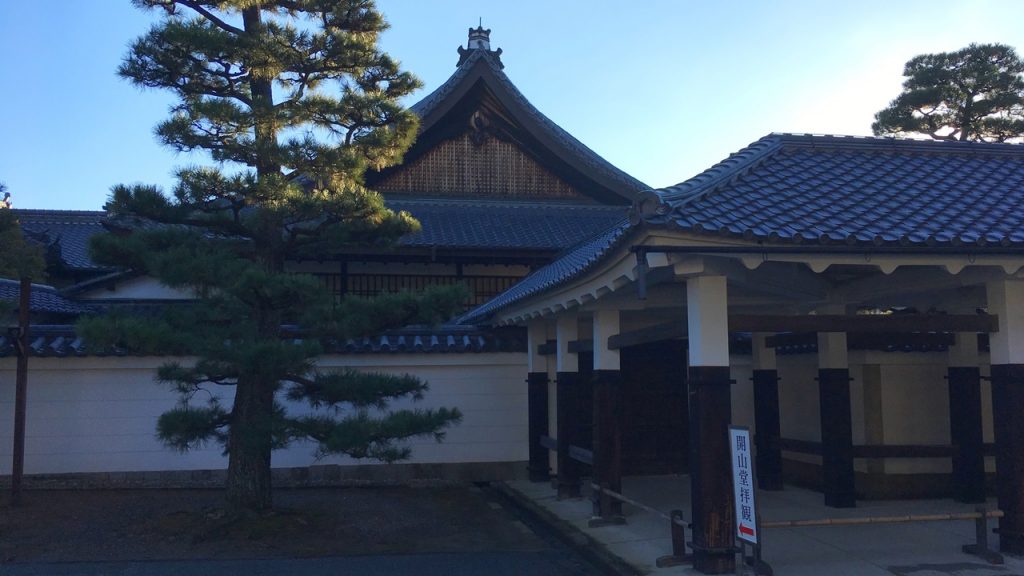
Soseki MUSOU who is the Kaisan (first chief priest) of this temple is enshrined in this building.

The front garden of Kaisan-to hall is also a Japanese rock garden.
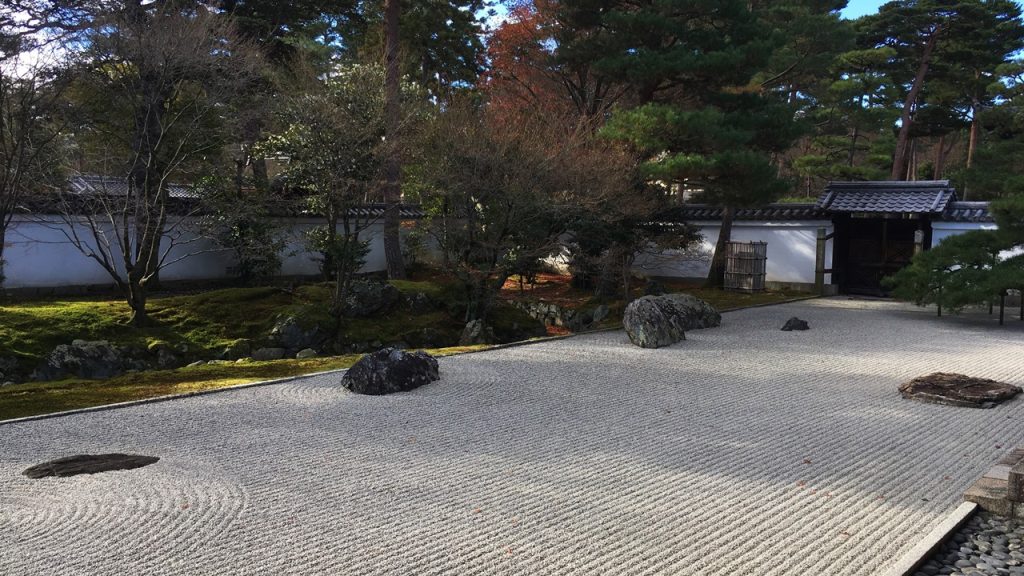
In the waterway of this garden, water flowed in old days.
However, the water had been dried up in about 1935.
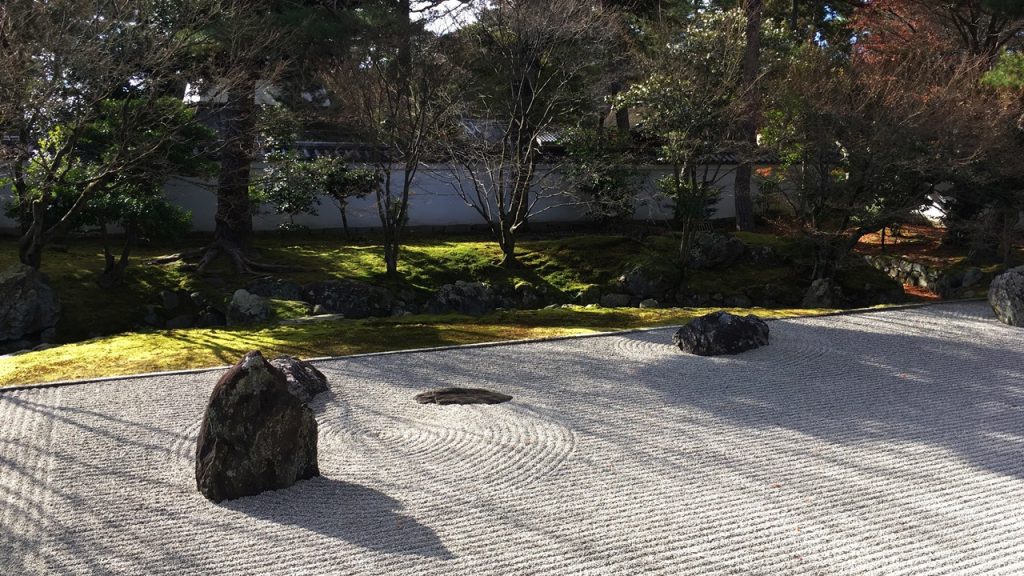
This is really traditional Japanese beauty… Japanese rock garden (dry garden).
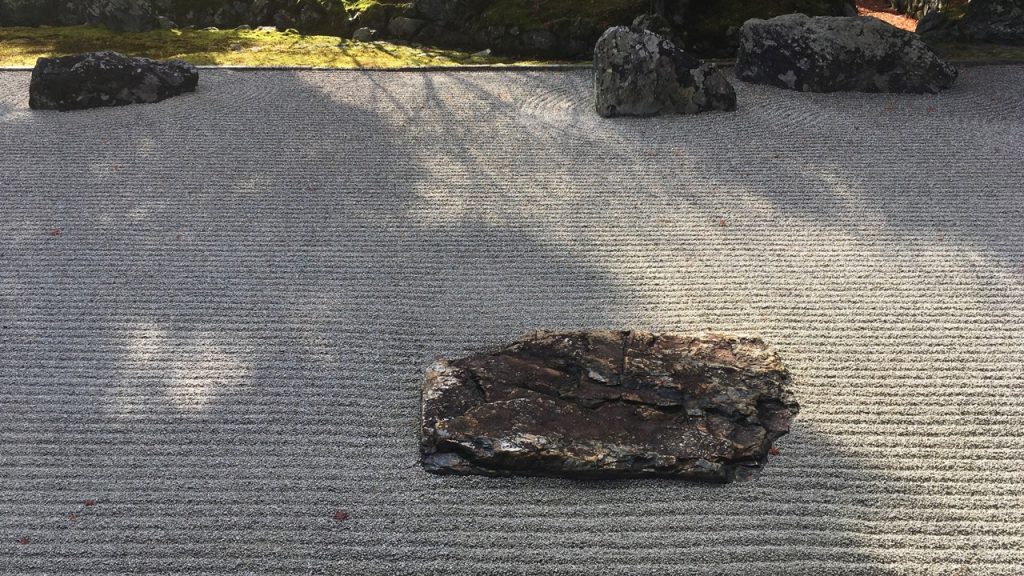
●宣明(浴室)*:Senmyo(Yokushitsu – bathing room)*
This is the Senmyo(Yokushitsu – bathing room) built in 1596 of the Edo period which was designated as a tangible cultural property designated by Kyoto City.
In Zen Buddhism, Bathing is also a part of ascetic practices.
We can enter it only during a spring special admission period.
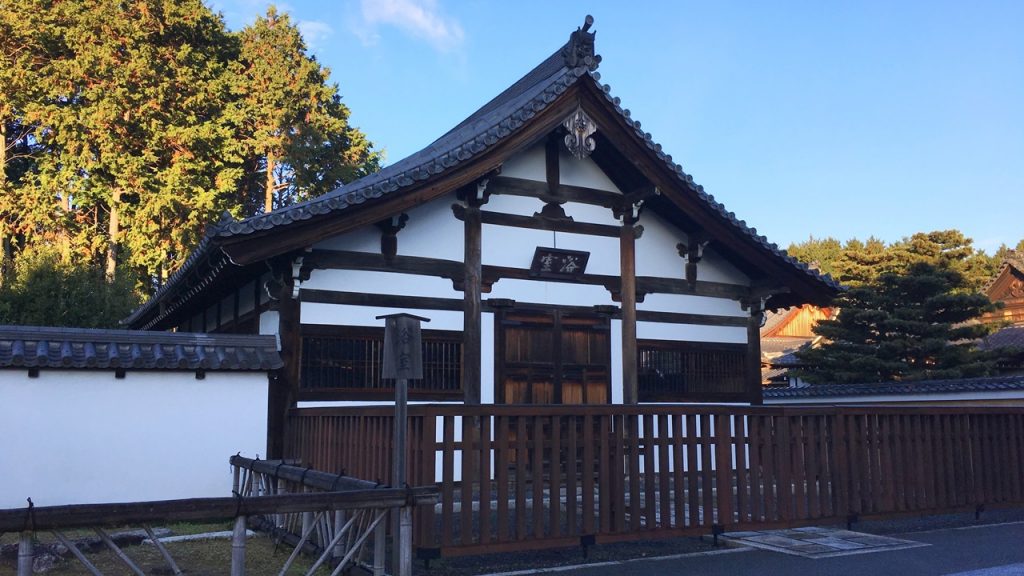
●経蔵:Kyozo (sutra repository)
This is the Kyozo (sutra repository) built in 1860 of the Edo period which was designated as a tangible cultural property designated by Kyoto City.
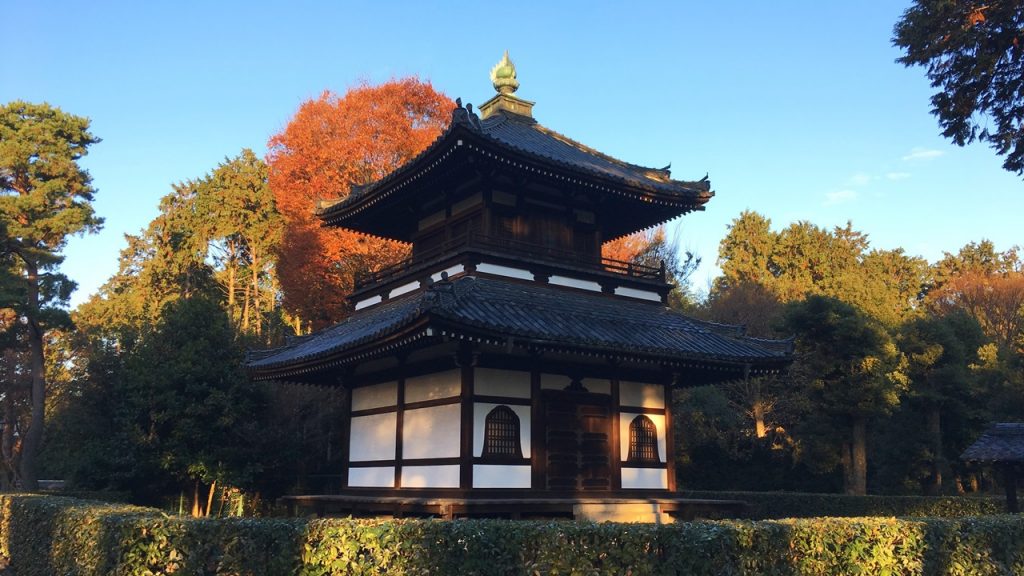
●洪音楼:Koon-ro (bell tower)
This is the Koon-ro (bell tower) built in 1843 of the Edo period which was designated as a tangible cultural property designated by Kyoto City.
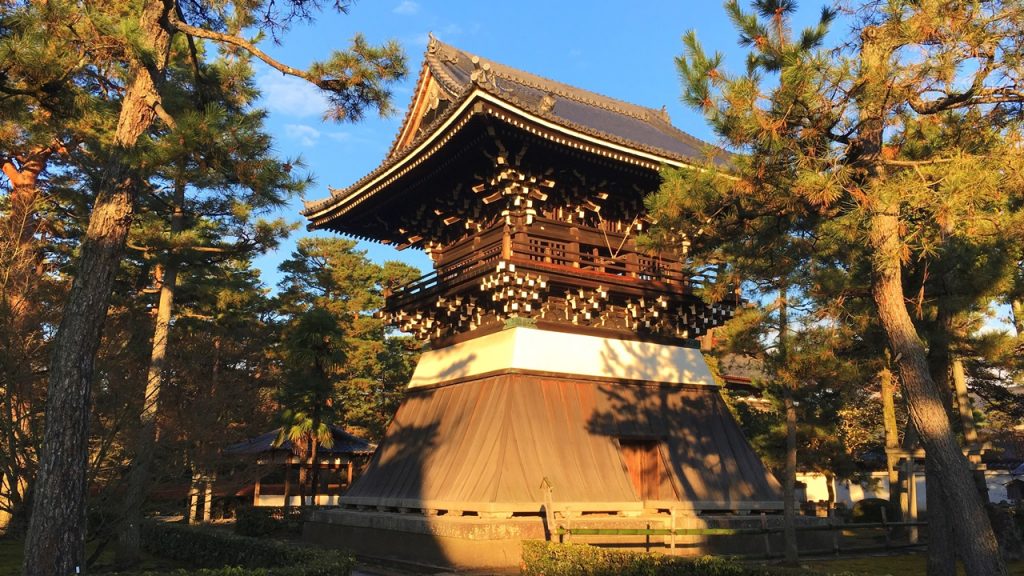
●天響楼:Tenkyo-ro (bell tower)
This is the Tenkyo-ro (bell tower).
This building built in 2011 is proof of the friendships with this temple and Daishokoku-ji temple in China.
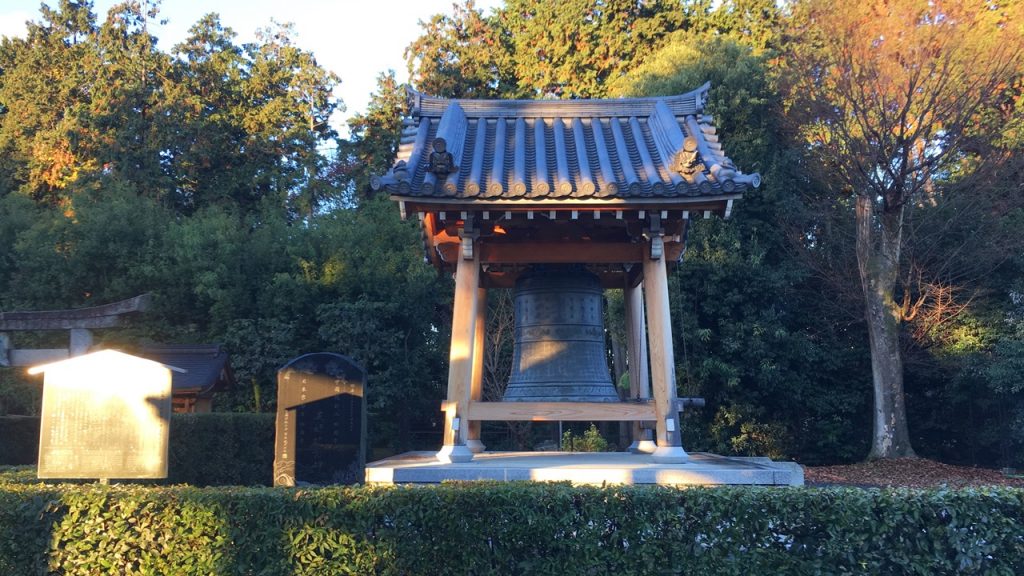
●庫裏:Kuri (monks’ living quarters)
This is the Kuri (monks’ living quarters) built in 1807 of the Edo period which was designated as a tangible cultural property designated by Kyoto City.
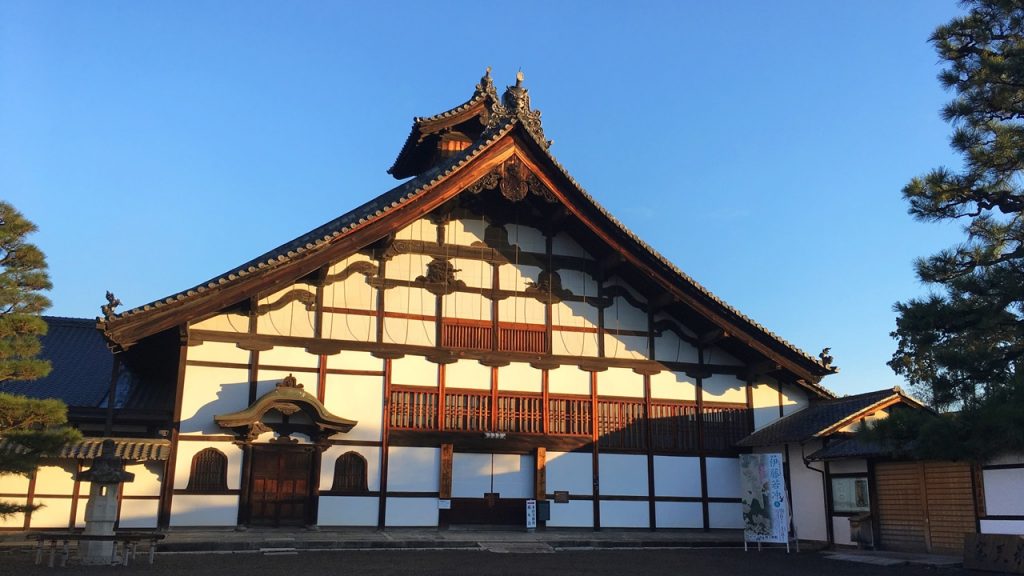
●弁天社:Benten-sha Shrine
This is the Benten-sha Shrine which was designated as a tangible cultural property designated by Kyoto City that Sarasvati is worshiped.
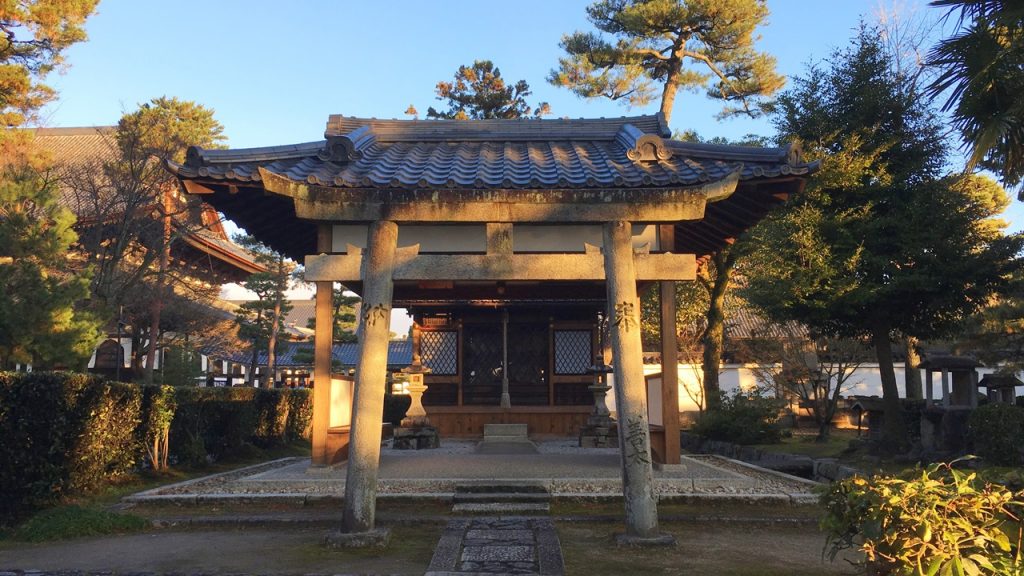
●宗旦稲荷社:Soutan Inari-sha Shrine
This is the Soutan Inari-sha Shrine where Sotan Gitsune (fox) is enshrined.
Sotan Gitsune (fox) was a monster fox, a story of which has been passed down at this Temple.
Sotan Gitsune transformed as a wandering Buddhist monk and studied at this Temple.
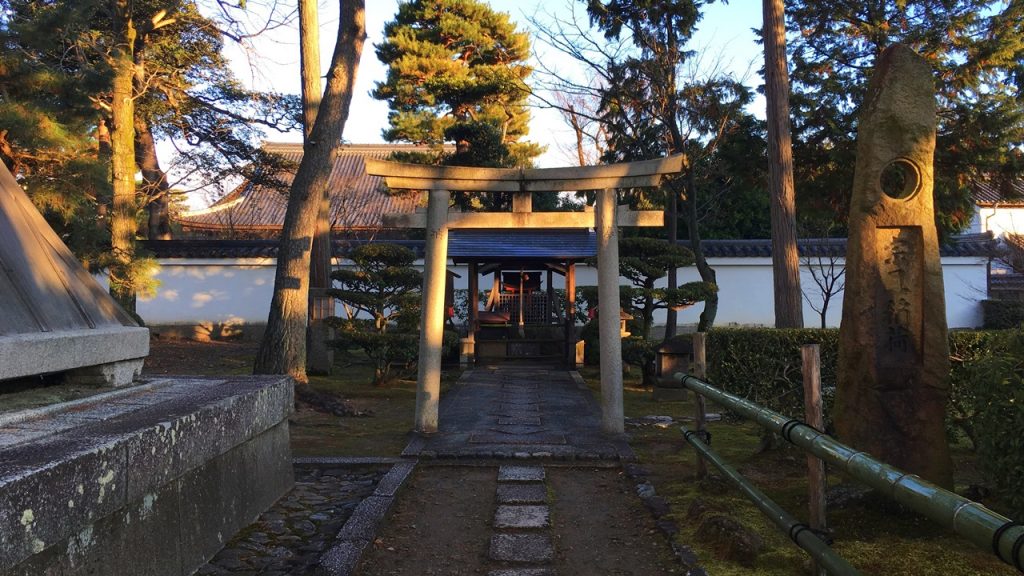
Because Sotan Gitsune was very smart, when this temple was a financial difficulty, he saved this temple.
(He advised the shop keeper to collect and sell a great amount of lotus leaves, and buy soy beans from the profit.)
Shokoku-ji Temple built a small shrine for Sotan Inari (fox deity), mourning the death of Sotan Gitsune that had contributed greatly for the temple, and made the fox the guardian deity of the So-do Hall.

●承天閣美術館:Jotenkaku Museum
The treasures of this temple are displayed in this art museum.
An admission fee is 800 yen (Adult).
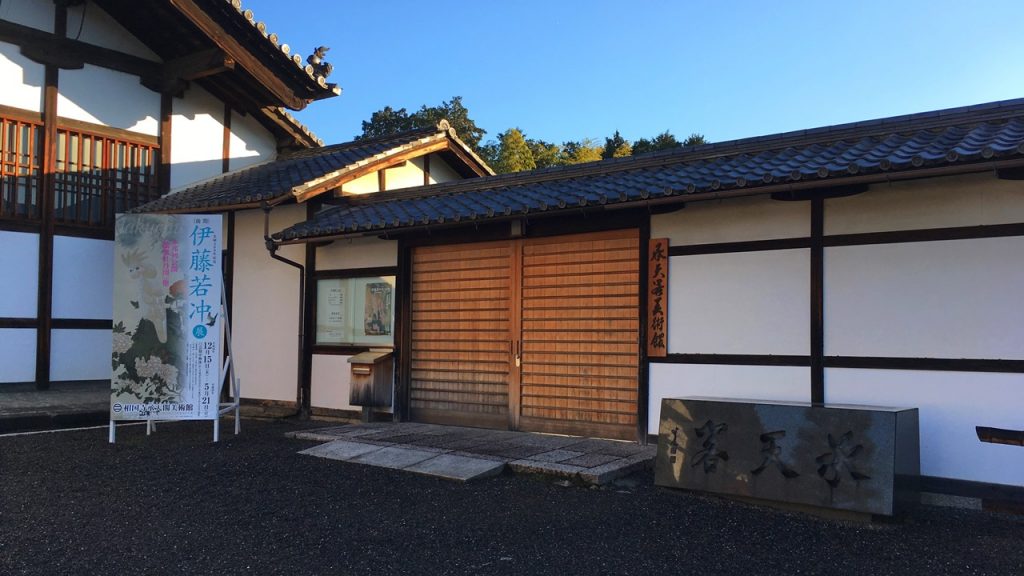
5.Goshuin (the stamp of shrine or temple) of Shokoku-ji temple
This Temple’s Sumigaki(The words which was written with a sumi(black ink)) is “無畏堂(Muido)” which is the another name of Hatto hall of this temple.
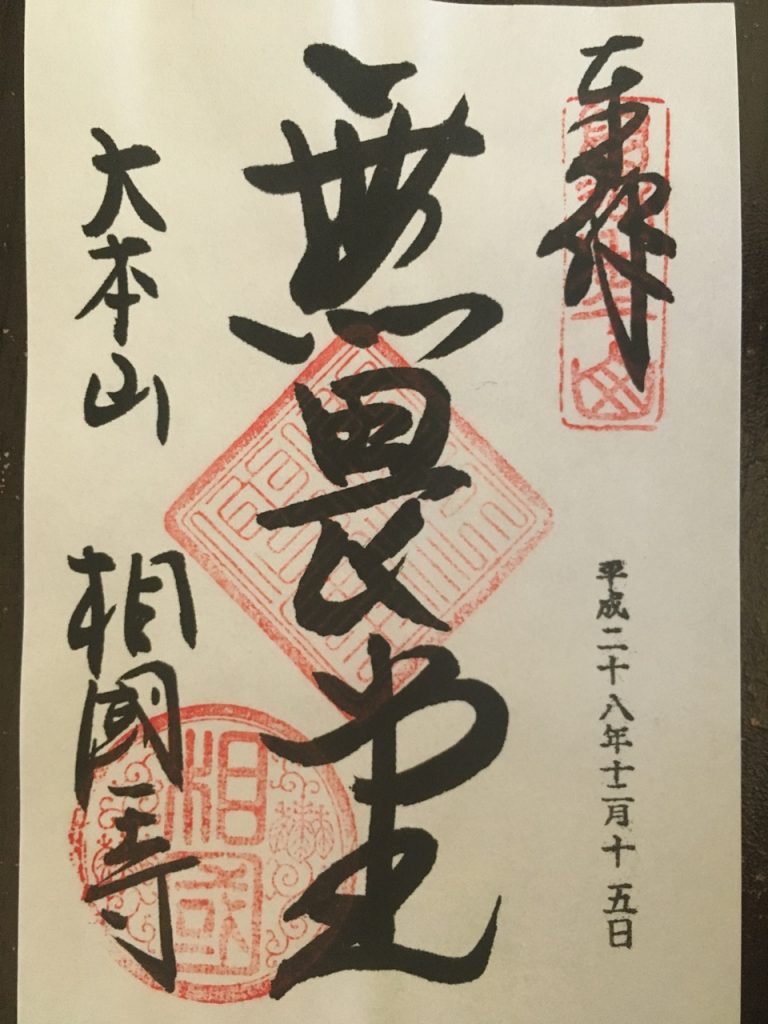
6.How to get to Shokoku-ji temple
The nearest station of Shokoku-ji Temple is “Kyoto City Subway Imadegawa Station”
(We can also go by bus from “Hankyu Kawaramachi Station” and “Keihan Gion-Shijo Station”.)
■Route Example (From Osaka Station to Imadegawa Station)

■Route Example (From Namba Station to Imadegawa Station)
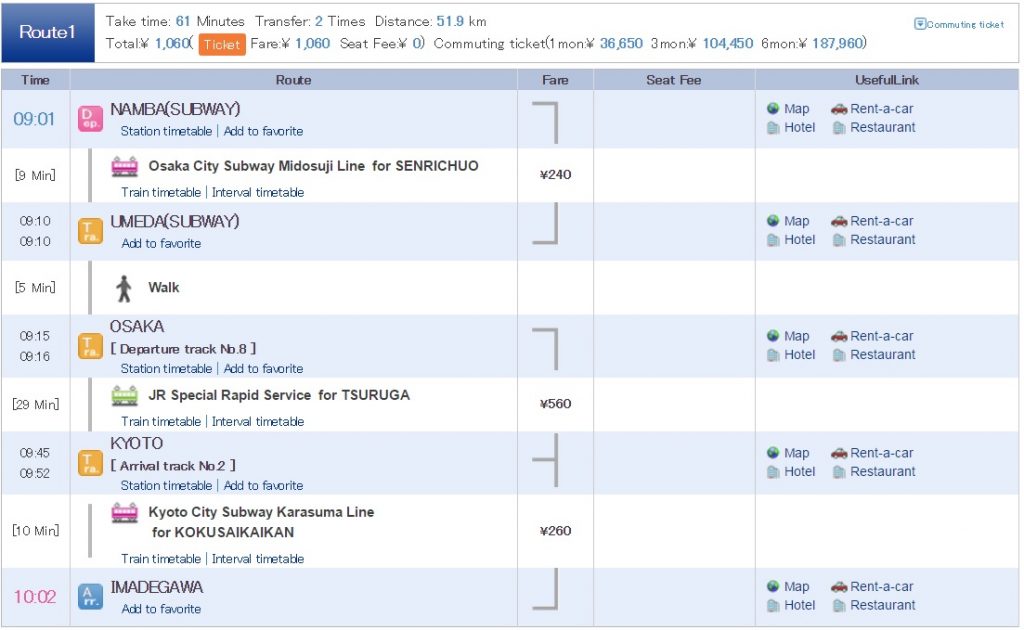
■Route Example (From Kyoto Station to Imadegawa Station)

■Imadegawa Station→Shokoku-ji Temple
We go on foot from Imadegawa Sta. to Shokoku-ji Temple.
It’s about 5 minutes (200m) on foot.
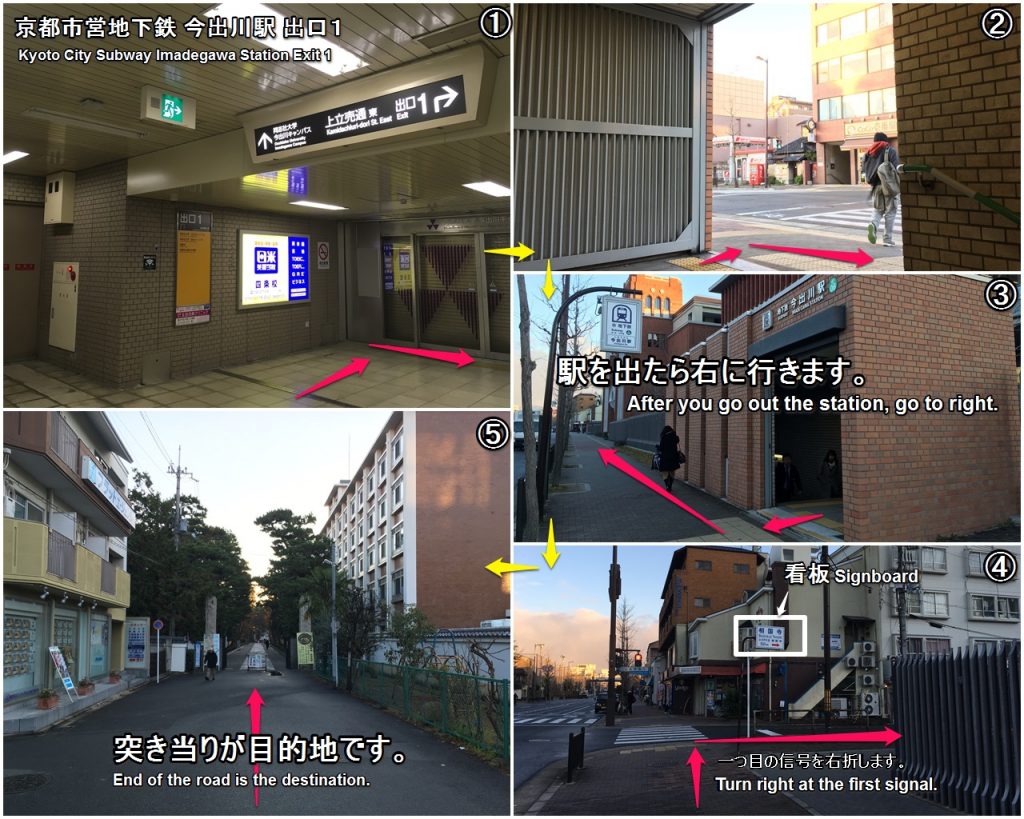
■When you get on a bus from Hankyu Kawaramachi Station
Timetable and Route Search of bus
[Timetable]Route No.15
[Timetable]Route No.51
[Timetable]Route No.59
Bus company:Kyoto City Bus
Routes/Destination:No.15 or 51 or 59[Bound for Ritsumeikan Univ. or Ryoanji Temple Via Kinkakuji Temple]
Boarding bus stop:Shijo-Kawaramachi[A]
Alighting bus stop:Doshisha-mae (Doshisha Univ.)
Bus fare:230 yen
Time required:About 20 min
[Timetable]Route No.201
Bus company:Kyoto City Bus
Routes/Destination:No.201[Bound for Hyakumanben Via Gion]
Boarding bus stop:Shijo-Kawaramachi[E]
Alighting bus stop:Doshisha-mae (Doshisha Univ.)
Bus fare:230 yen
Time required:About 20 min
■When you get on a bus from Keihan Gion-Shijo Station
Timetable and Route Search of bus
[Timetable]Route No.15
[Timetable]Route No.51
[Timetable]Route No.59
Bus company:Kyoto City Bus
Routes/Destination:No.15 or 51 or 59[Bound for Ritsumeikan Univ. or Ryoanji Temple Via Kinkakuji Temple]
Boarding bus stop:Shijo Keihan-mae[C]
Alighting bus stop:Doshisha-mae (Doshisha Univ.)
Bus fare:230 yen
Time required:About 20 min
[Timetable]Route No.201
Bus company:Kyoto City Bus
Routes/Destination:No.201[Bound for Hyakumanben Via Gion]
Boarding bus stop:Shijo Keihan-mae[C]
Alighting bus stop:Doshisha-mae (Doshisha Univ.)
Bus fare:230 yen
Time required:About 20 min
How did you like it?
Please try to go to this temple.
Have a nice trip! XD
<Let’s search the sightseeing information of Kansai in Japan on ‘Japan’s Travel Manual‘!!>
<This site introduces the easiest way to get Japanese (Kansai) sightseeing spots to you.>




